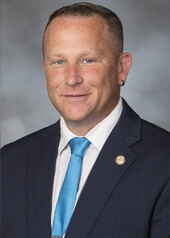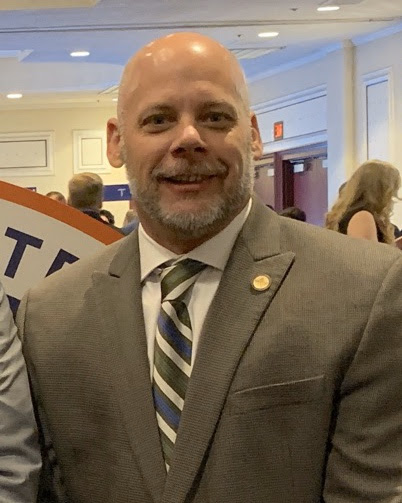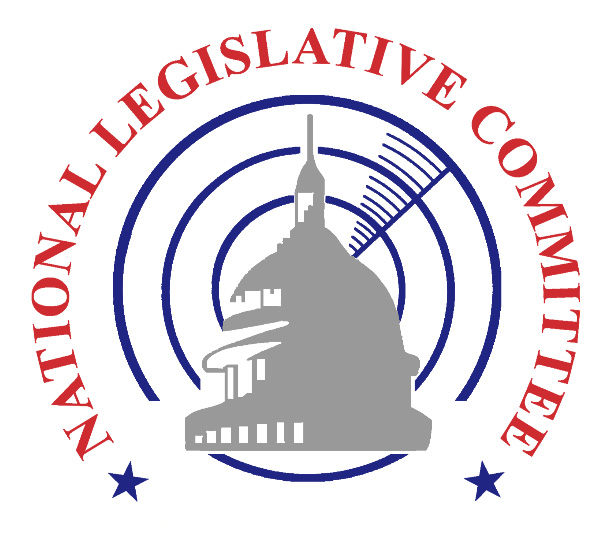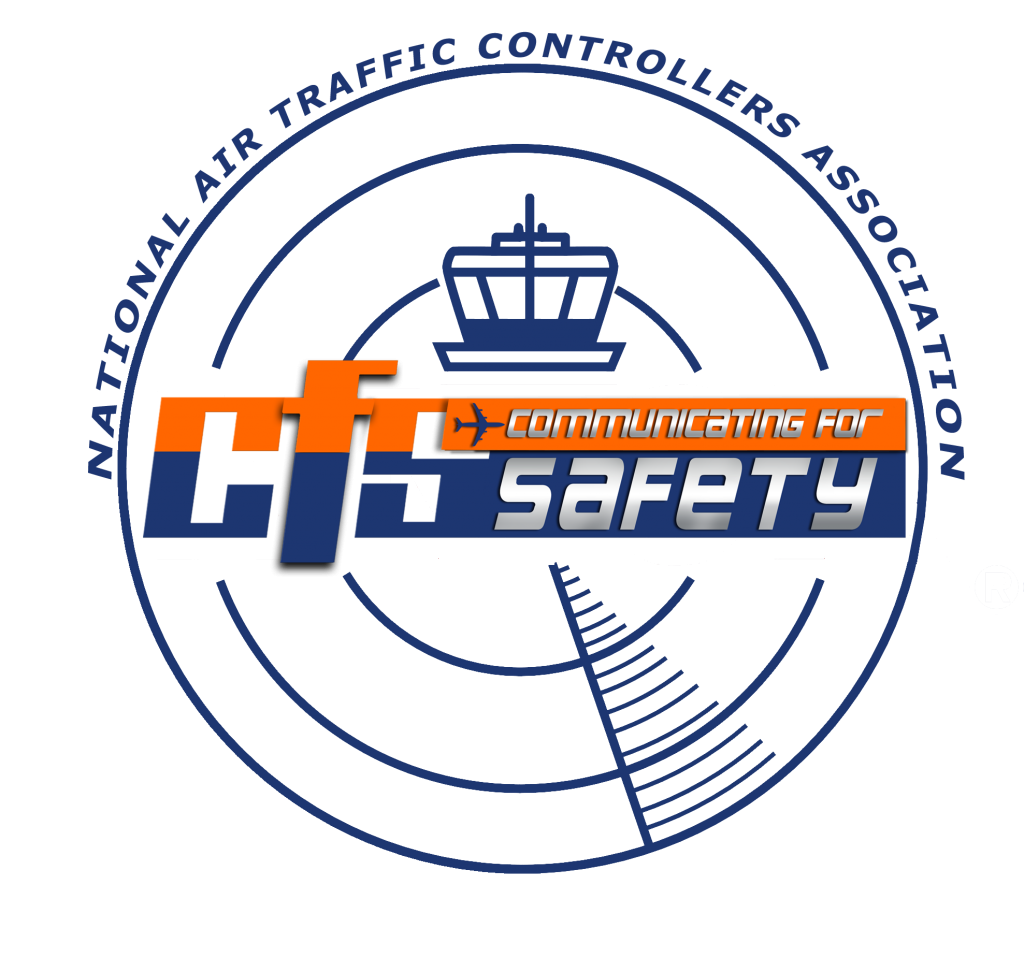
August 2022 New England Bi-Monthly Regional Update #1
From Mick Devine, NATCA New England Regional Vice President

Staffing is a real issue across the NAS, as you are mostly all well aware. Our bargaining unit has 1500 fewer controllers nationwide than we had eleven years ago. Let’s discuss the process to understand how we could get this way.
Every year, FAA Finance must submit the Controller Workforce Plan to Congress. Inside of this plan is what FAA Finance believes is the required staffing for the FAA to fund. This process proceeds without consultation or collaboration with NATCA. FAA Finance is outside of the ATO and does not collaborate with NATCA; instead, they adhere to the fact that staffing is a prohibited subject of bargaining.
FAA Finance determines a range of staffing for each facility. This range does not adhere to our old CRWG (Collaborative Resource Work Group) numbers used inside the ATO for staffing decisions. FAA Finance believes the number of controllers is in a sweet spot of staffing as they only make decisions based on finances, not safety. Controllers on OT are a better, more cost-efficient choice than staffing up the NAS.
President Rich Santa made two speeches recently highlighting the staffing problems in the NAS. NATCA has developed a strategy on how to tackle this growing problem. The FAA Reauthorization Bill is coming up for renegotiation. NATCA has begun setting the groundwork with our legislators in getting new language into that bill. Amongst other things, NATCA’s biggest priority is to get FAA Finance out of the staffing game, or at the very least, set the guidelines to which they act.
First and foremost, NATCA and the FAA are in the early stages of renegotiating the CRWG numbers for each facility based on a repeatable formula that all facilities will use to determine their staffing numbers. Facility staffing must use this formula and not a range based on fiscal savings by an entity of the FAA which doesn’t understand the operation. We are currently testing the formula on several facilities, and the
findings are positive thus far. As we continue, we will open up this process to more and more facilities. We hope to finish this process by the end of 2022.
We must codify into law through the FAA Reauthorization Bill either that FAA Finance is removed from the staffing business or initiate a set of guidelines and data sets they must adhere to while determining their suggestions to Congress each year. For instance, today, FAA Finance counts total controllers in the building as their staffing number. President Santa gave a great analogy during his speech in DC. While at the Aero Club, NATCA had a table with ten seats, two of which were empty. Rich described the table as a facility with a staffing number of ten. Six people at the table are CPCs, two CPC-Its, and the last two seats are empty. If that table were a facility, NATCA and the ATO would determine the facility to be 60% staffed as they have six of ten bodies on board. However, FAA finance would say that table has a staffing range of seven to nine. They would add the CPCs and trainees together, giving them a total of eight. Thus, the report to Congress would be that facility is fully staffed. So the ATO and NATCA agree that the table representing a facility would be 60% staffed (severely understaffed), while FAA Finance is reporting that same facility to Congress as fully staffed. That is the major problem that has caused this dangerous and unsustainable condition we are all in. ACK is 63% staffed, Y90 is 68%, BGR is 72%, BOS is 76%, and A90 is 79%. BED and ZBW are staffed in the low 80% range, but the FAA reports to Congress that every New England facility is well staffed. Yes, Y90, even you!
So NATCA has begun fixing this in the next FAA Reauthorization Bill, but it is an uphill battle. It will require as many of us as possible to help create this long-needed fix. It’s an essential topic in our next NATCA in Washington, and I would venture to say there will be a rolling lobby week associated with this at some point. We will need volunteers to take up this fight. Our supply of controllers, who are passionate about staffing, is abundant. We hear you daily, either through social media, facility visits, or direct communication about how passionate you all are. Now is the time to direct that passion into a solution. It will take volunteers either in volunteer hours or PAC donations (our dues money cannot go to this fight), or both. Now is not the time to sit on the sideline.
From Scott Robillard, NATCA New England ARVP

Hello NATCA New England!
As a Leadership Team, we travel from building to building. Constantly, I hear one theme “If NATCA wanted to do something for me, why don’t they negotiate higher staffing numbers for my facility”?
My response is, who do you think they would be negotiating with?
It might seem like a smart-aleck response, but I challenge you to answer it. The Union cannot negotiate the number of people hired to enter the Bargaining Unit(s). That is a prohibited subject of bargaining. The Union can and does negotiate what to do with the employee(s) here. But when there isn’t enough of them, what do you do? You rob from Peter to pay Paul, that’s what!
There are a couple of things to understand. First, understand what the FAA thinks about controller staffing. It’s not hard to find. It’s not hidden. Under public law, they are required to report to Congress.
The report is called The Air Traffic Controller Workforce Plan 2022-2031. A full copy of the report is linked here.
For this update, I want to focus on one headline grabber: Headcount. I suggest you read it, but I must warn you. You probably won’t be happy.
Page 5 Headcount
While the FAA strives to keep Certified Professional Controllers (CPCs) and Certified Professional Controllers in Training (CPC-ITs) within the range, individual facilities can be above the range due to advance hiring. The FAA hires and staffs facilities so that trainees, once fully certified, are prepared to take over responsibilities when senior controllers leave.
Most of this report is written by FAA Finance. Remember that FAA Finance is outside of the ATO, and generally, they are not a fan of NATCA nor controllers. You must also understand that Human Resources (outside of the ATO) hires controllers to the Finance determined “facility staffing ranges.”
The facility number you see in Staffing Workbook or the Priority Placement Tool is from the Collaborative Resource Work Group (CRWG). NATCA and the ATO agree to those numbers. But remember that the CRWG numbers are limited by the overall number set by FAA Finance (which HR uses to hire). So basically, the game was rigged from the start. Understanding this makes it easy to see where the problem starts.
But from here, it gets worse. How?
First, FAA finance sets a RANGE for the facility. Then it says, “the FAA strives to keep CPC and CPC-ITs within the range…” On pages 57 to 64 of the report, you will see that they ACTUALLY “strive” to keep CPC, CPC-IT, and DEV within the range. What this should tell you is that FAA Finance does not think their staffing range is what is needed to work traffic. They believe this also includes meeting all future losses AND everything a facility needs to accomplish (annual leave, sick leave, PPL, training, negotiations, modernization, etc.) It means the number of CPCs needed to work traffic is significantly lower than the “staffing range,” in their opinion.
Please look in the Congressional Report and see where your facility falls in FAA Finances’ eyes.
Ok, so that is a lot of data. What am I trying to say? Simple, what do you do if you don’t like the game you are playing and can’t seem to win? First, understand the problem, devise a strategy, and finally, change the game. Regionally, we talk about legislative activism, PAC money, and Unionism. It is here where all those topics merge. Look to your Legislative Reps in your building: The FAA does not control staffing; the United States Congress does!
Labor Management Relations
From Jake Detwiler, NATCA New England LR Coordinator, ZBW

This is my first NNE LMR update after taking over as the New England LMR coordinator from Kyle Szary. Kyle was an immense presence on the NNE LMR team and is sorely missed. In addition to managing and coordinating LMR activities within the region, Kyle was responsible for liaising with the Agency to coordinate PAR (Pre Arbitration Review) and Pre-PAR meetings.
One component of these meetings is the PAR panels allow both parties to argue their case in front of a Neutral. The Neutral is a professional Arbitrator/Mediator, and the parties hire to hear their case(s). In accordance with (IAW) Article 9, Section 8 of our CBA, PAR is a step in the Grievance process beyond the initial grievance, but before taking it to Arbitration. The Neutral issues their opinion after hearing both sides (and rebuttals), but it is non-binding. However, this non-binding opinion gives both parties an idea of how the particular grievance might play out in Arbitration. IAW the CBA, we maintain a panel of 3 Neutrals available to serve on our PARs. After our most recent PAR case, on June 1, 2022, the Agency exercised its right (per Article 9, Section 9.b.) to remove the Neutral from the panel of three, meaning they will no longer serve as a Neutral on our PARs. It usually occurs due to an unfavorable decision from the Neutral. As a result of this removal, we are now selecting and filling a new Neutral to our panel. We have the full complement of 3 to choose from for our upcoming PAR in September. We have four grievances that we are taking to PAR in September. As part of the process and somewhat unique to NNE, we will hold a Pre-PAR meeting between NATCA and the Agency to try and resolve the grievances before taking them in front of a Neutral. Over the next month, we will prepare for those PAR meetings and present our side of these Grievances.
Legislative
From Jamie Green, NATCA New England Legislative Chair, PVD

As you have read in Mick and Scott’s update, our staffing issues can’t be fixed through traditional LR channels. So, how can you help change our current staffing situation?
Your NATCA Legislative Team works continuously to foster relationships to grow our NATCA Majority consisting of both Republicans and Democrats on Capitol Hill. The relationships we build with members of Congress are vital to our success. These relationships ensure that our Union’s message is heard and that we can work with our NATCA Majority members of Congress to craft solutions beneficial to our membership.
One of NATCA’s most powerful relationship-building tools is the NATCA PAC. NATCA PAC money enables our Government Affairs staff and NATCA legislative activists to attend events with members of Congress. The PAC puts NATCA in a position to discuss issues important to our membership and work to develop solutions with legislators. Donating to the NATCA PAC is a way every member can participate and help our Union to continue this vital work. Every dollar counts, no matter how small. Our high rate of participation allows us to fight above our weight class! We cannot fight this fight with dues money. Please show your support to fix staffing with Congress. Donate today: www.natcapac.org.
Another way to get involved is to volunteer and become a NATCAvist! If you would like more information on how to get involved, please email me at [email protected].
Upcoming NATCA Academy Dates
LAT – Legislative Activism Training
11/08/2022 – 11/09/2022
Location: Las Vegas, NV
ALAT – Advanced Legislative Activism
10/12/2022 – 10/14/2022
Location: Washington, DC
12/06/2022 – 12/08/2022
Location: Washington, DC
Safety Management
From Seth Myers, NATCA New England Safety Rep, ZBW

As summer is underway, we want to remind everyone of upcoming NATCA events.
Communicating for Safety is at Bally’s in Las Vegas September 12 -14. This premier safety event brings NATCA members together with representatives from the FAA and aviation community leaders to discuss an array of safety and modernization topics. Some of the speakers this year will be Captain Tammie Jo Shults, former Naval Aviator and retired Southwest Airlines captain. She and her crew successfully landed a Boeing 737 after a catastrophic engine failure, saving the lives of 148 people. Joining Captain Shults is former Air Force Thunderbirds commander and now AOPA Air Safety Institute senior vice president Richard McSpadden. In addition to these two speakers will be former U.S. Navy commander, New York Times best-selling author, and leadership expert Michael Abrashoff. The agenda for CFS is filling up and looking to be another outstanding event. Thank you to the NATCA CFS Committee and their hard work to get yet another top-tier Safety Conference available to us.
NATCA New England will be hosting Safety Advocacy Training here in New England. To have this training here in the northeast and not have to travel to the west coast is a huge advantage for NATCA members in our region. This 2-day course is designed for members with varying levels of experience. The course provides the student with the background and knowledge of the different safety programs, processes, and requirements. Although we would like to see FACREPs, Facility Safety Reps, and Local Safety Counsel members attend, we also welcome anyone who would like to learn more about safety and become more involved in these systems and processes. Safety Advocacy Training will be held in Nashua, NH, at the Double Tree hotel on September 28-29. If interested, contact your FACREP or Facility Safety Rep to learn more.
NCEPT Information
From Jake Detwiler, NATCA New England NCEPT Rep, ZBW
On the NCEPT side, we are spooling up for our third NCEPT panel this calendar year. We are on track to have four NCEPT panels this year, which would be considered a regular timeline. The upcoming August 23 NCEPT panel is the first panel where the rules have been changed from the initial “temporary modifications” seen by post-COVID NCEPT panels. The two significant changes from more recent panels are the elimination of the CRWG-level movement cap (facilities were CAP’d on selections based on their CRWG level, not their staffing needs) and the removal of the Actual-On-Board (AOB) CPC level as a qualifier for a facility to gain; now it is only Projected % To Target (Column AA of the PPT). This change allows for facilities to select based on where their staffing truly lies, as opposed to a facility that is well staffed today (has a high AOB) but a low projection due to forecasted losses. Even though they knew they’d be short-staffed in a few months, their current staffing kept them from making any selections. The parties have kept Round 2 for lower-level facilities (Level 4-7), moving into Level 8-9s. New hire terminal controllers are sent to Levels 4-7, so creating the second round for focusing on movement from those facilities up into the Level 8-9s emphasizes the idea of a “farm system” for the terminals. Controllers build experience at these lower-level facilities, but the Agency continues to send new hires into them with the intent of keeping their staffing high enough that they can continue to release into the higher-level facilities that require more CPCs but might not have the training capacity at the facility level to accommodate an Academy Graduate(AG).
Unfortunately, by the time you read this update, the ERR Submission deadline for the August NCEPT has already closed. Expect a fourth NCEPT panel sometime in the late Fall, before the end of the year. Staffing workbook entries (the numbers impacting a facility’s staffing level and ability to select or release) for this panel get finalized this coming week, and Manager Ranking Lists go out on August 15. As always, if you have questions about the NCEPT process or if there is anything I can help with, feel free to reach out.
Upcoming Events

The 2022 Milford Labor Day parade is on and NATCA New England will be marching! We will meet at Milford High School at 12:00 pm for a parade start of 1:00 pm. After the parade, we will meet at the Milford VFW for a catered lunch. We look forward to seeing you there!
Save the Date! NATCA New England will hold its first-ever Corn Hole Tournament at White Birch Brewery in Nashua, NH on October 1st from 1:00 – 6:00 pm. Keep an eye out; more details coming soon!


